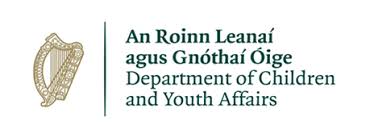
Minister Zappone T.D. launches The Universal Design Guidelines for Early Learning and Care Settings
The Minister for Children and Youth Affairs Dr Katherine Zappone launched the Universal Design Guidelines for Early Learning and Care (ELC) settings. These guidelines are an important step in making all ELC services accessible to all children. This publication will offer guidance on the refurbishment, renovation and the building of centres for Early Learning and Care in Ireland.
The work was undertaken by Early Childhood Ireland and Trinity Haus (Trinity College Dublin) on behalf of the Department of Children and Youth Affairs and the Centre for Excellence in Universal Design at the National Disability Authority.
This work involved:
Reviewing national and international best practice, research and guidance in design of early years settings from a Universal Design approach;
Consulting with a diverse range of stakeholders, including early years practitioners, parents and children; and
Developing Universal Design Guidelines for Early Learning and Care settings, including a self-audit tool, which aims to support the early years sector in creating universally designed spaces for all stakeholders in both new and retrofit settings.
These guidelines will also be useful for built environment design professionals in private and public sectors working on the design of new build and retro-fitting of Early Learning and Care settings.
Launching the guidelines, the Minister said
“Early Learning and Care Services are expanding all of the time. The National Development Plan will further assist this. We want these settings to be accessible and welcoming, not just to children but to families, grandparents and the staff who work there. Above all we want these environments to optimise children’s learning at this critical time in their lives.”
Ends//
Background Note:
In 2016 the Department of Children and Youth Affairs introduced a suite of supports to enable the full inclusion and meaningful participation of children with disabilities in the Early Childhood Care and Education (ECCE) programme. The model of supports called AIM – the Access and Inclusion Model – is a child centred model, involving seven levels of progressive support, moving from universal to targeted, based on the needs of the child and the Early Learning and Care setting. The goal is to empower settings to deliver a quality and inclusive early learning and care experience ensuring all children can fully participate in their early learning and care. The development of these guidelines originated at the AIM Cross Sectoral Implementation Group where it was agreed to utilise the concept of universal design in producing guidelines.
Universal Design is the design and composition of an environment so that it can be accessed, understood and used to the greatest extent possible by all people regardless of their age, size, ability or disability. The Department of Children and Youth Affairs sought the support of the Centre for Excellence in Universal Design at the National Disability Authority to advance this work. These guidelines set out the key Universal Design (UD) considerations and guidance for Early Learning and Care (ELC) settings in Ireland. These guidelines apply to both new-build and retrofit projects and provide a flexible UD framework to ensure that settings are accessible, understandable and easy to use for all children, staff, families and visitors.
An ELC setting provides Early Learning and Care to children primarily aged from birth to six years. This may include sessional settings (where children attend for up to 3.5 hours) or part-time settings (where children attend for over 5 hours). These settings may also provide school-age facilities that cater for children up to the age of 14 years.
In Ireland, in 2018, 39% of settings are located in the house of the ELC setting owner and are one-person settings. 66% are in urban areas, 34% in rural areas. 74% are privately run, while the remaining 26% are community based.
An ELC setting can take many forms in various locations such as: a standalone setting within the community; part of a larger community centre; co-located with a primary or post-primary school; or, attached to, or part of a private dwelling. Some settings are converted from previous use, for example a home office, full dwelling house or community hall. Some are purpose built and some may be in a modular building (pre-fab). An ELC setting may also consist of a childminding service undertaken by a registered childminder within their own home.
The Universal Design Guidelines for Early Learning and Care settings support best practice in ELC and access requirements of all users and visitors to a setting. These guidelines underpin need by a systematic literature review including national and international best practice; site-based case studies; and a wide-ranging stakeholder engagement process.
The guidelines raise awareness about the importance of a supportive built environment in inclusive Early Learning and Care settings.
These guidelines will be equally useful for small, medium and large settings and are flexible enough to apply to retrofit or minor work to existing settings, or to guide major redevelopments or new-build projects. Also launched today is a literature review supporting the guidelines and a self-audit tool for services to begin the process of assessing the improvements they may want to make.
Click here to view original report on DCYA website



Leave a Reply